“I feel in this city everyone—almost everyone—are migrants or children of refugees from somewhere,” Chinese artist Ai Weiwei said at a TimesTalk on Monday evening at the New School. “The strongest character of the city is the mix of people from all different nations, religions, and races, so it’s a perfect city for me to make this project.”
The project in question is the monumental Good Fences Make Good Neighbors, produced by the Public Art Fund, which is celebrating its 40th anniversary this year. The massive, citywide exhibition opened on October 12 with over 300 site-specific installations that aim to bring attention to the global refugee crisis and the current geopolitical controversy over migration and border control. The exhibition coincides with the release of Ai Weiwei’s documentary Human Flow, which tracks the refugee crisis in 23 countries over the course of a year.
Known as China’s most famous artist and dissident, Ai can empathize with the millions of people forced out of their homes by war and conflict. He and his family were exiled during China’s Cultural Revolution, and his father—a renowned poet—was forced to clean toilets. Ai migrated to New York City, where he lived for 10 years in the 1980s and early ’90s before returning to China. There he gained notoriety for his thought-provoking art and social media presence and was arrested—and later released—by the Chinese government. He currently lives and works in Berlin.
“Ai Weiwei is unique in having combined the roles of preeminent contemporary artist, political dissident, and human rights activist in such a prominent and powerful way,” Public Art Fund director and chief curator Nicholas Baume said in a statement. “In many ways, Good Fences Make Good Neighbors is the culmination of his work to date. It grows out of his personal experience of ‘otherness,’ his distinguished practice as both artist and architect, as well as his intensive research on the international refugee crisis and global rise of nationalism. At the same time, his long and formative history with New York has been deeply influential in the development of this exhibition.”
Ranging from larger-than-life installations at Washington Square Park, Central Park, and Flushing Meadows Corona Park, to subtle interventions on the urban landscape, Good Fences Make Good Neighbors is a poignant reminder that we should be breaking down barriers, not building new ones. Scroll down to see the highlights. The exhibition will be on view until February 11, 2018.
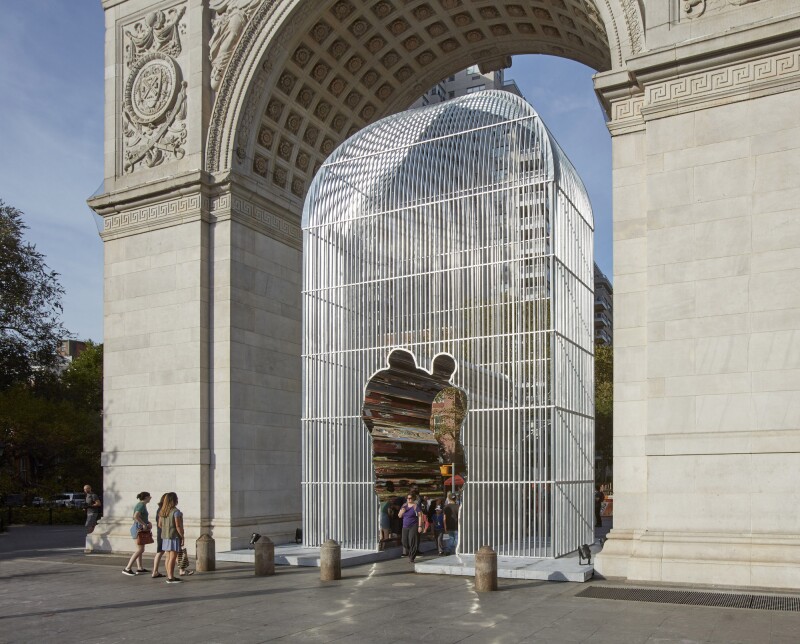
“The triumphal arch has been a symbol of victory after war since antiquity,” said Ai Weiwei in a statement. “The basic form of a fence or cage suggests that it might inhibit movement through the arch, but instead a passageway cuts through this barrier–a door obstructed, through which another door opens.”
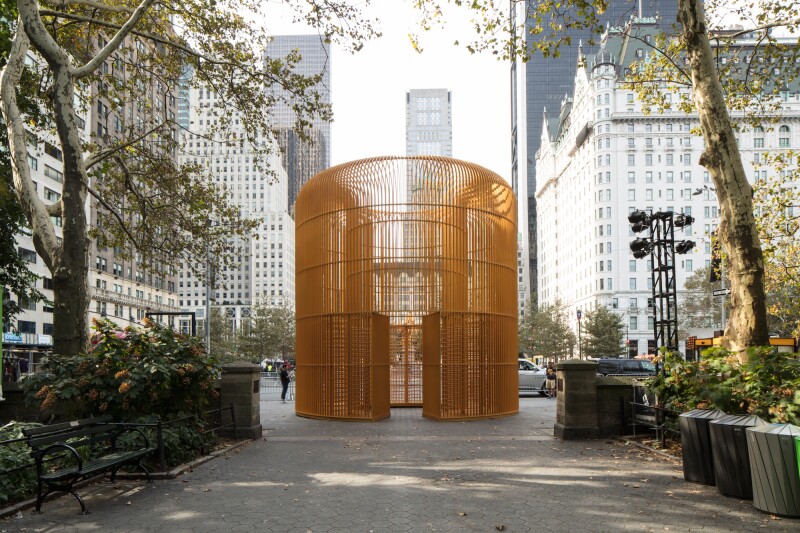
Gilded Cage at Doris C. Freedman Plaza at the southeast corner of Central Park invites people to interact with the work by passing through turnstiles.
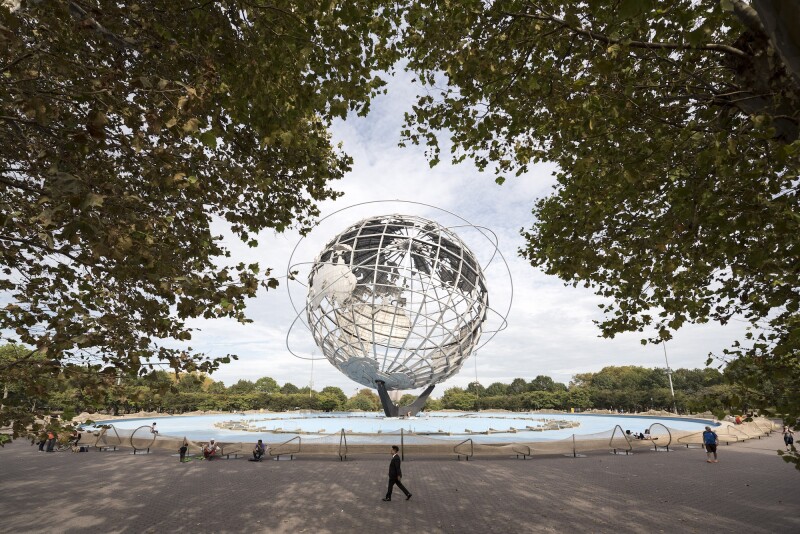
Timothy Schenck 2017
Circle Fence at the Unisphere in Flushing Meadows Corona Park in Queens calls into question the steel globe commissioned for the World’s Fair in 1964 and what it symbolizes.
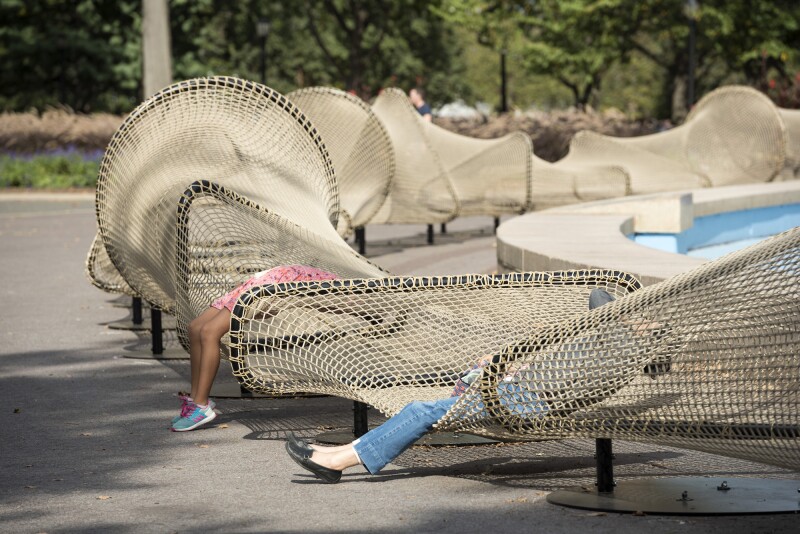
Timothy Schenck 2017
Viewers are encouraged to interact with the installation in Flushing Meadows Corona Park in Queens, which is located in one of New York’s most diverse areas.
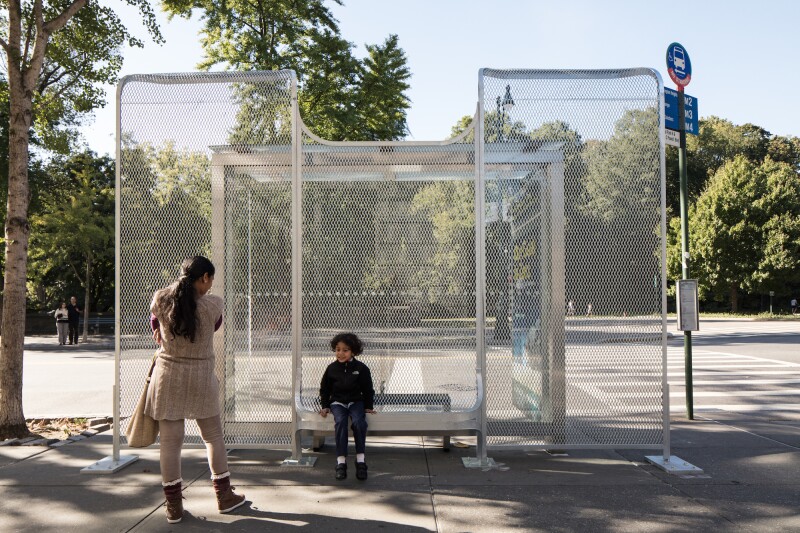
Installations at bus shelters in Harlem (pictured here), Brooklyn, and the Bronx subtly draw attention to the importance of means of transportation in the global refugee crisis and the role that immigrants have played in constructing transit infrastructure in the United States.
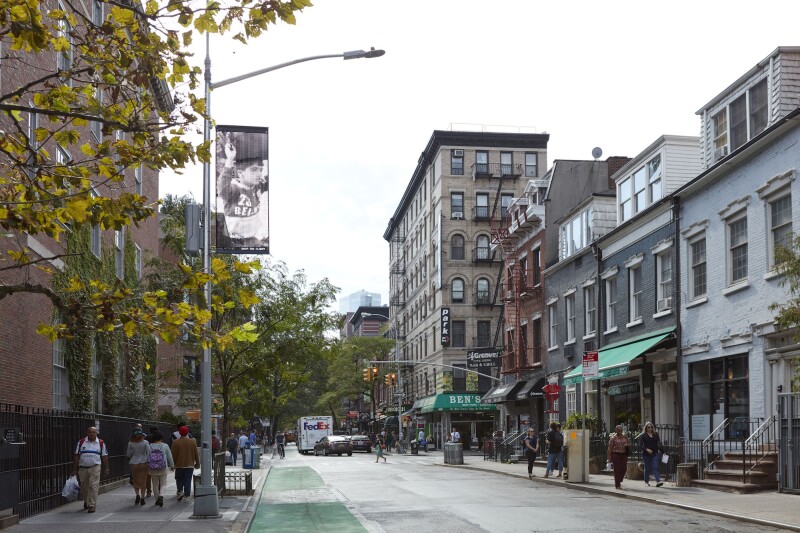
Don’t forget to look up—it’s easy to miss these banners featuring portraits of immigrants from different periods, including historic images from Ellis Island.
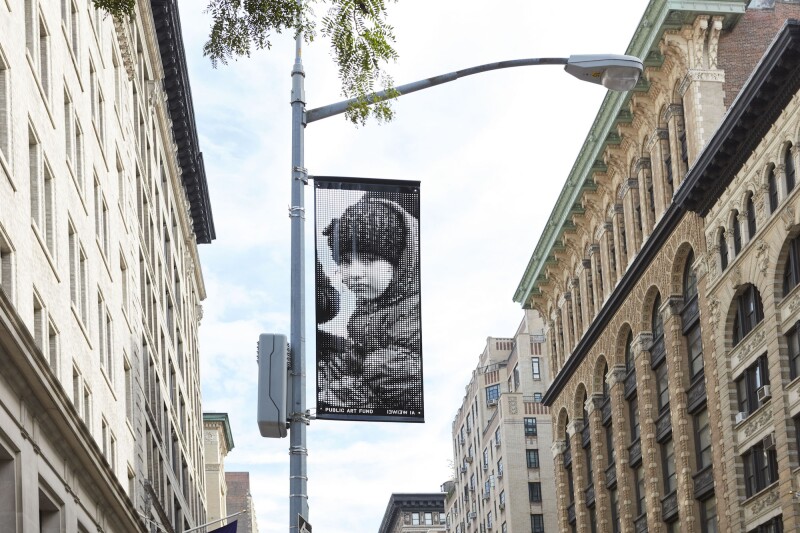
In addition to the 200 banners, there are 98 documentary images posted on bus shelters and Intersection’s LinkNYC kiosks around the city.











